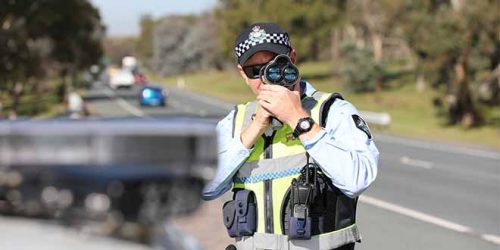THE Australian War Memorial’s latest exhibition, “Nurses: from Zululand to Afghanistan”, explores the personal stories of Australian military nurses, from the first known Australian nurse in the Zulu War of 1879 up to the experiences of nurses serving in recent conflicts and peacekeeping operations.
Curator Robyn Siers says the exhibition is a walk-in timeline.
“Once you hop in, you follow it all the way around from earliest times and you come out the other end, looking at what our nurses are doing today,” Robyn says.
“Nurses: from Zululand to Afghanistan” (until October 17) draws on the Memorial’s rich collection to tell the story of Australian military nursing.
The iconic veil and cape worn by early nurses together with the technologically advanced equipment used today tells of the changing role and place of nurses in Australian military operations.
Photographs, diaries and personal objects, such as a pencil used by Sister Betty Jeffrey to record her life in a prisoner-of-war camp, reveal a much more personal story.
“One of the most profound aspects of the exhibition are the stories encapsulated in the diaries kept by many nurses,” Robyn says.
“They speak of hardship and adversity, but they also speak of great courage and devotion to the role that nurses play in war. Qualities that continue in our nurses serving today.”
Nurses have never been far from the front line, but often far from home, treating the sick and wounded in the air, and on land and sea.
During World War I, more than 3000 Australian civilian nurses volunteered for active service, a commitment that continued through World War II with some 5000 Australian nurses.
“Nursing provided a way for the women to be actively involved in the war. It was a great adventure for them, it was a way for them to travel and have independence,” Robyn says.
“It was also a way for them to stay in touch with loved ones, with brothers and cousins and sweethearts who were serving. But of course, if you were a nurse, right up until the 1970s, and you decided to get married, you would have to leave the service.”
Today, men and women serve as Australian military nurses, continuing to work in remote and dangerous places, often under difficult conditions. As well as providing essential medical treatment to Australians wounded in war, nurses are also deployed in peacekeeping and humanitarian operations, providing care to local military personnel and civilians in countries ravaged by war or natural disasters.
Robyn says modern nursing as we know of today, really only began in the late 1850s with British nurse Florence Nightingale.
“Modern nursing really developed out of wartime nursing,” she says.
“It was Florence Nightingale who really instituted all the modern methods of sanitation and hygiene and nurse training and all the stuff that we now take for granted.”
Read more: “The brave world of Sister Beryl”.
All images are courtesy of the Australian War Memorial.
Who can be trusted?
In a world of spin and confusion, there’s never been a more important time to support independent journalism in Canberra.
If you trust our work online and want to enforce the power of independent voices, I invite you to make a small contribution.
Every dollar of support is invested back into our journalism to help keep citynews.com.au strong and free.
Thank you,
Ian Meikle, editor




Leave a Reply